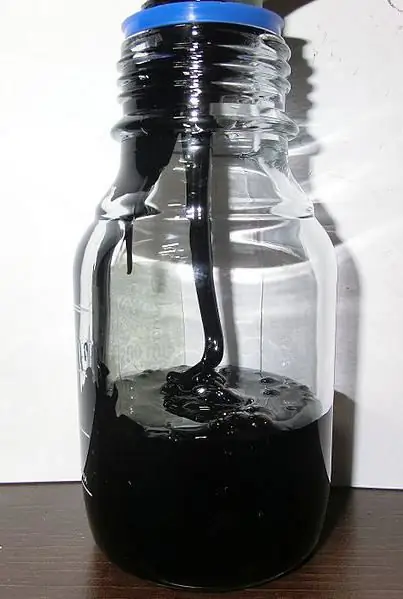2026 Author: Howard Calhoun | [email protected]. Last modified: 2025-01-24 13:10:26
On the shore of the Sea of Japan there is a special marine oil port of Kozmino (Neftebaza). It is the last point of the East Siberia - Pacific Ocean (ESPO) oil pipeline.
This port is designed to transport oil to Asian countries in the Pacific region. Transneft Kozmino Port is a domestic company offering stevedoring services and operating an oil terminal in the port of Vostochny, which is located in the Wrangel Bay of Nakhodka Bay. In December 2012, the company became the extreme point of the ESPO pipeline system.

Development history
The port of Kozmino in Nakhodka, Primorsky Krai, is the largest and youngest terminal in Russia. The ESPO pipeline system (TS ESPO) is an integral part of OOO Transneft. Its construction gives Russia the opportunity to export oil to the countries of the Pacific Partnership. The share of the port "Kozmino" in the supply of fuel by sea is kept within 30%. Which is 70 million tons per year.
Construction and use of the first, and then the secondof the ESPO TS project and the port (terminal) in Kozmino Bay gave Russia the opportunity to export ESPO (East Siberian - Pacific Ocean) new grade oil to the TTP states (Pacific Trade Partnership). And thus, to some extent, expand its influence. On December 28, 2009, construction began on the first branch of the ESPO pipeline and the oil loading port of Kozmino. Then the first 100 tons of oil were loaded. The construction of the second branch of the oil pipeline project was completed on December 25, 2012. In order to increase the capacity of the port, repairs of the underwater dam began in 2015. Dredging of the water area of the second berth is also underway, which will improve the capacity for tankers. New oil storage tanks are also being built. From the end of 2009 to the middle of 2016, over 139.035 million tons of oil were passed through Transneft Port Kozmino LLC.
Since then, the number of countries in the Asia-Pacific region, to which Russian oil is supplied, has been constantly expanding.

Environment of the port. What you need to know
Kozmino port belongs to the II class of local-local hazard. In order to identify environmental problems and assess environmental risk, an environmental audit system has been introduced at the facility. An eco-audit involves an independent assessment of compliance with regulatory requirements in the field of nature protection by a business entity. On the territory of the terminal there is an installation for the recovery of vapors and waste oil products, which are released in high concentrations from tankers and threaten the he alth of a normal person. When loading oil intoa specialized tanker within a radius of 30-40 meters, booms (floating) barriers are used. They prevent the spread of a possible bitumen-oil slick over the surface of the bay. Industrial effluents used in production cycles are discharged to treatment facilities, which are located on the territory of the tank farm. The necessary control over the level of pollution of tanker ballast water is carried out by specialists from the environmental and chemical services.

Sea inhabitants are nature guards
Good ecology in the port of Kozmino is supported by the "comb farm". Which is located near the pier. There, the ecology is monitored by scallops, king bottom crab and sea mollusks. They are able to accumulate teratogenic substances and serve as indicators showing the degree of purity of the sea. They were specially released at the berths, and they are constantly monitored by specialists for the presence of harmful substances. If such substances are not observed in the organisms of shells, then this is an acceptable risk zone for the "personalities" living there.
Production Features
Technical buildings and capacities of the port of Kozmino are located in the Nakhodka city district and the nearby Partizansky district. These facilities include: 4 railway overpasses with two-way discharge, a tank farm and mainline booster pumping stations; 23 km main oil pipeline with provincial infrastructure: communication and power lines; tank farm with a platform for tanks; auxiliary coastal and berthing facilities with metering stationsoil (SIKN) and an autonomous oil pier for mooring tankers; a technological site for receiving oil with an SIQN unit (oil quality measurement system), a safety system for oil pipeline branches and industrial water discharge tanks; repair and other technical shops; shop for transport and special equipment; pipeline security service, including the ESPO branch - II.
Earlier, from the moment of operation, oil was delivered to the offshore facility by rail across Russia. The headquarters of the terminal - the port of Kozmino is located in the city of Nakhodka. The enterprise accepted its first staff for draining on October 22, 2009. Four unloading double-sided overpasses can provide gravity bottom discharge from 72 railway tank cars each separately (144 tank cars in total). After that, the West Siberian oil was pumped to the tank farm of the oil depot and loaded into tankers as soon as it was available. Spetsmornefteport worked in this way before the construction of the second branch of the ESPO TS.

Port Capacity Expansion
At present, the effective modernization of the oil loading port is taking place at a realizable pace. In 2010, 3 new reservoirs were built, as a result, the volume of oil storage increased to 500,000 cubic meters. An additional system for measuring the quantity and quality of stored transport oil was also built. In modern times, oil is delivered to the port of Kozmino through main pipelines and by rail. Loading onto tankers is carried out at four oil piers, wherelarge ships. The project laid down and is implementing a modern complex of innovative facilities for round-the-clock work.

Work directions
Kozmino oil loading port provides directions for the main works:
- Pumping oil from the ESPO-II oil pipelines.
- Draining oil from railway tanks to the export tank farm.
- Auditing the quantity and quality of crude oil.
- Short-term storage of marketable oil in storage facilities adapted for this purpose.
- Loading oil on large-tonnage ocean transport.
According to plans to ship oil from the specialized port of Kozmino, it is planned to reach an annual volume of over 23 and more million tons.

Conclusion
The total volume of oil transportation carried out through the Kozmino port for the Asia-Pacific countries is: Japan - 37.6% (4.4 million tons); China - 20.5% (2.4 million tons); South Korea - 14.5% (1.7 million tons); Philippines - 7.7% (0.9 million tons) and further down the list, including Thailand, Malaysia, New Zealand, Singapore, Taiwan and Indonesia.
It should be noted here that exports of ESPO brand oil from the offshore specialized facility in 2018 totaled 30.4 million tons.
For its contribution to the social and economic development of the city and the region, Transneft-Port Kozmino LLC was awarded many honorary diplomas.
Recommended:
India, "Kudankulam" (NPP): description, history and features

The Kudankulam Nuclear Power Plant in India, which went into commercial operation on its first power unit on December 31, 2013, has been under design and construction for 26 years and has withstood a seven-month blockade by protesters to become the largest nuclear power plant in the country
Oil is a mineral. Oil deposits. Oil production

Oil is one of the world's most important minerals (hydrocarbon fuel). It is a raw material for the production of fuels, lubricants and other materials
Vankor field: development history, description, oil and gas reserves

The Vankor oil and gas field is one of the jewels in the crown of the Russian oil industry. Its development began relatively recently, and hydrocarbon reserves are huge
History of porcelain: a brief history of development, types and description, technology

Ceramic products are the oldest kind of craft from all the skills mastered by man. Even primitive people made primitive utensils for personal use, hunting decoys and even earthenware utensils like hut ovens for cooking. The article tells about the history of porcelain, its types and method of obtaining, as well as the distribution of this material and its path in the artistic work of various peoples
How is oil produced? Where is oil produced? Oil price

Currently, it is impossible to imagine the modern world without oil. It is the main source of fuel for various transport, raw materials for the production of various consumer goods, medicines and other things. How is oil produced?

